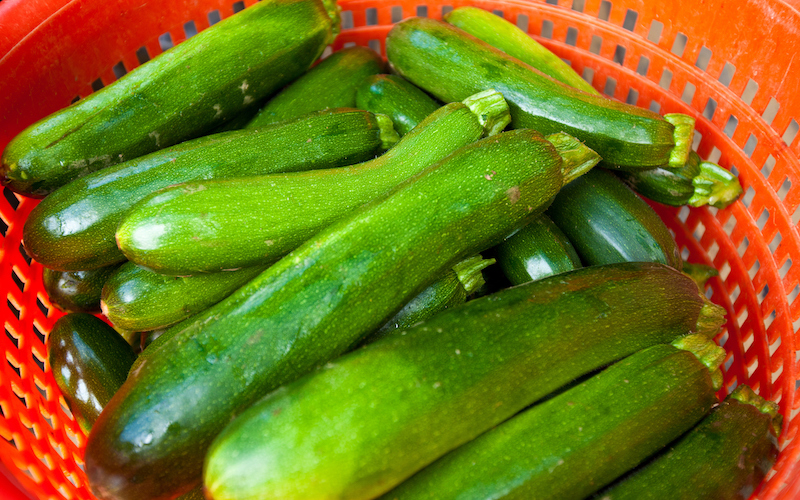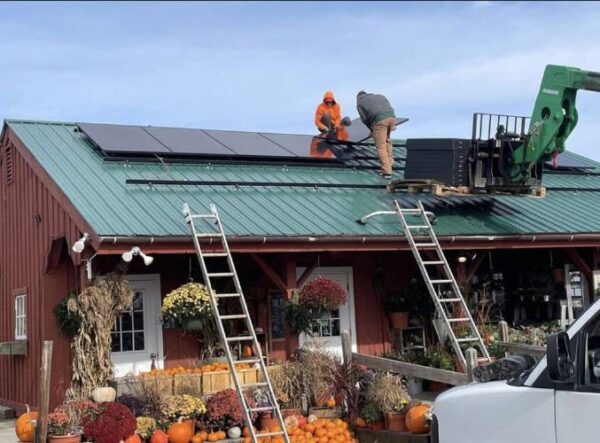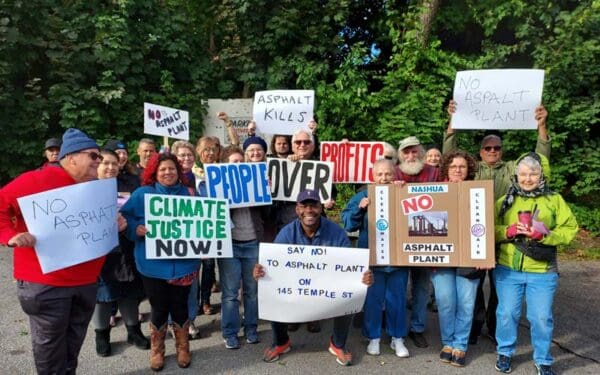
Climate change is affecting all parts of our lives: including our farms. Photo: EcoPhotography.
This piece was originally published in the Concord Monitor.
We’ve been farming for nearly 40 years. We began seeing the changes about a dozen years ago: Frosts came later, we picked vegetables longer into the fall, droughts were more severe, but rainy periods were torrential and led to flooded fields and failed crops.
Thirty-eight years ago, I started working at Spring Ledge Farm in New London on the field crew for a summer job, and my family and I bought it from the Clough family 20 years ago. We grow vegetables, hanging baskets, flowers, strawberries, nursery plants, and corn on about 40 acres and sell directly to our customers from our farmstand on Main Street. It is a great way to make a living if you like working with soil, plants, and your community.
For years, we had a fairly good idea of what each season would bring. Spring meant sunnier days, warmer temps and the adrenaline to tackle the hard work and long days of planting. Summer would be the time to weed, harvest, retail and plant for the next season.
Fall would find us picking the last vegetables, flowers and corn in the fields, then a killing frost would help us by clearing fields for us to button up for next spring. And the winter would bring a blanket of snow to protect our perennial crops like strawberries and force us to take a breath and enjoy some skiing.
Climate change is upending these typical seasonal patterns on the farm.
Progressively, and with growing intensity in the last five to seven years, we are seeing more intense weather. The hot spells of summer are now beyond what we saw in previous years. Winters are warmer, but then come cold snaps that last only a few days, but are damagingly cold.
Given there is so much unseasonably warm weather surrounding those cold snaps, plants can’t acclimate and don’t have the insulation of snow we all remember from previous decades. Perennials and strawberry plants can suffer terrible damage and for farmers growing apples and peaches, the resulting bud loss can wipe out a year’s harvest.
Summers are increasingly hard to predict and hard to farm. Two years ago we had no rain and lost crops where we had no irrigation. But I will take drought over the increasingly common alternative. Before the last few years we never saw two or three inches of rain in a day; now that amount may fall in a few hours. You plant, you fertilize, you are growing, and then you get three inches of rain and everything drowns.
This past year was the most challenging — we lost two corn fields, and several successions of other field crops and watched as our topsoil eroded away. We were out of corn three weeks earlier than in other years. When customers ask where it is, we explain how the climate changes are affecting our farm, and their food supply.

In our newsletter to our customers we spelled out the problem:
”Since June 1st, we’ve seen over 14 inches of rain. Here at Spring Ledge, we’re busy mitigating water flows where possible, slogging through mud to get to our fields, picking crops daily in the pouring rain, and watching some of our crops drown. Especially hard-hit are the Brussels’ sprouts, lettuces and peas. However, compared to our farmer friends across the river in Vermont who are dealing with flooded fields, lost crops, and the possible loss of entire farms, we feel fortunate.”
We are pushing back, with investment in pumps and pipes and tubes to fight drought and high tunnels, drainage, cover crops and expensive fungicides to help the places threatened by floods and wet weather. We invest good money planting a crop, then lose the crop, then have to try to find a local supply and buy from another farm to replace it at the stand. All of this chips away at the tiny profit margin we budgeted.
At Spring Ledge we are making changes — again, expensive changes — to make our farm more sustainable and more climate-friendly.
Just this year we finished converting the entire farm to electricity from solar panels, a three-year project. We’ve replaced four fossil fuel furnaces that heat our greenhouses with a more sustainable wood chip boiler. We’re fortunate to have received some funding assistance from several sources including a R.E.A.P. (Rural Energy for America) grant and the NH Department of Energy Renewable Energy Fund Program. While we are working towards mitigating the risks of this new farming environment, there are things that our state can do to help farmers and others.
New Hampshire is the only state in New England that will not set legally binding goals to cut carbon emissions. It is the only New England state that has said ‘no’ to standards for a transition to all-electric new car sales. And it is trailing other states on the kinds of incentives that make putting in solar and wind affordable and help us transition away from oil and gas.
Each season shows us in real time that climate change is adversely affecting farmers and changing the rural landscape of New Hampshire. I encourage our state leadership to help everyone by making this a priority.




